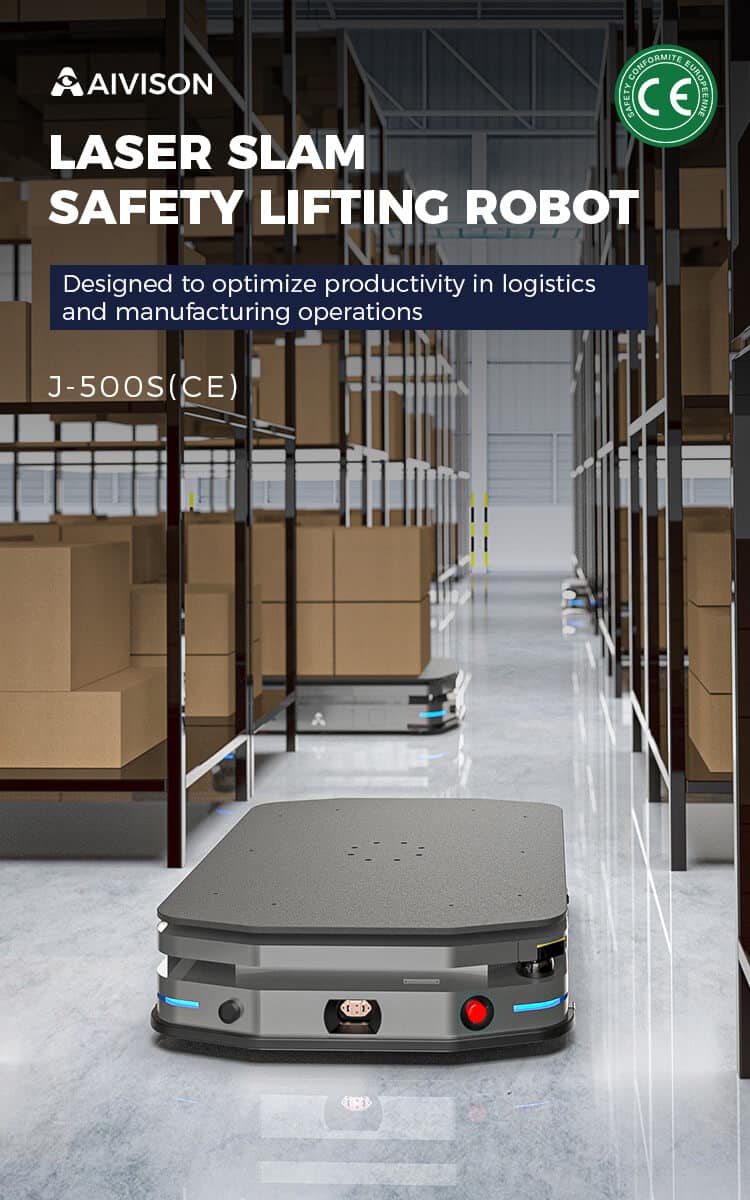
1.In terms of intelligence(AMR Robot and AGV Robot)
The operation of traditional AGV Robots mainly relies on deployed external markers (such as two-dimensional codes, magnetic strips, etc.), which cannot fully understand the field operating environment and is difficult to flexibly respond to field changes. Through SLAM (Simultaneous Localization and Mapping) technology and sensor technology, AMR Robot can realize intelligent environment perception, autonomous navigation and path planning, no longer need to preset guidance routes, and can automatically avoid people or obstacles.
2.In terms of flexibility
Unlike traditional AGV Robot deployments, which require pre-planned routes and laid external markers, and because changes are more expensive, once deployed, AGV Robots usually can only perform the same operational tasks throughout their entire life cycle. AMR deployments do not require changing the facilities and layout of factories or warehouses, but only require simple software adjustments to change the tasks performed by AMR Robots. This means that the same AMR Robot can flexibly perform different job tasks, and is more suitable for harsh scenarios with changing business and complex environment dynamics.
3.In terms of security cooperation
Because AMR Robots have the ability of depth perception, dynamic path planning and active obstacle avoidance, compared with traditional AGV Robots, which are prone to security risks in a dynamic and complex man-machine collaborative environment, AMR Robots are more adaptable to the requirements of man-machine collaboration and can work with humans safely in a dynamic environment. Moreover, AMR Robots can also be equipped with collaborative robotic arms to form a composite AMR Robot, which can achieve a larger operating range and meet the needs of man-machine collaboration in more complex scenarios.
4.In terms of operation efficiency
When there is an obstacle on the route of the traditional AGV Robot, it can only stop operation until the obstacle is removed; When the multi-machine operation encounters obstacles, the AGV Robot team can only queue up, or carry out traffic control like the train track line, which has poor synergy and is easy to block. Due to its autonomous navigation and safe obstacle avoidance capabilities, AMR Robots can autonomously adjust their operating route and bypass people or obstacles, and their operating efficiency is greatly enhanced whether it is single-machine operation or multi-machine collaborative operation.
5.In terms of technological advancements
the use of AMR Robots is transforming modern manufacturing and logistics. Traditional AGV Robots rely on fixed tracks or markers for navigation, which not only requires re-planning when facility layouts change but also limits flexibility. AMR, however, integrate advanced sensors and artificial intelligence algorithms to build and update environmental maps in real-time, autonomously planning and adjusting paths. This adaptive capability allows AMR Robots to excel in dynamic and complex work environments, responding flexibly to changes without preset routes, significantly enhancing operational efficiency and flexibility.
AMR Robot
AMRs robot represent a significant leap forward compared to traditional AGV Robots in terms of intelligence, flexibility, safety, and efficiency. By leveraging advanced technologies like SLAM and real-time environmental sensing, AMR Robots offer superior navigation capabilities, allowing them to adapt to dynamic conditions without relying on preset routes. Their ability to autonomously avoid obstacles and collaborate safely with humans makes them well-suited for complex and evolving work environments.
Moreover, AMR Robots can easily adjust to different tasks through software updates, enhancing their versatility and operational efficiency. This adaptability not only reduces downtime and operational costs but also enables seamless integration into existing workflows. As industries continue to seek more adaptable and efficient automation solutions, AMR Robots are poised to play a pivotal role in shaping the future of smart manufacturing and logistics, driving innovation and improving overall productivity.
